Table of Contents
ToggleTravel Salalah: 27 Amazing Reasons to Visit Oman’s Hidden Gem
Why You Should Travel Salalah Now
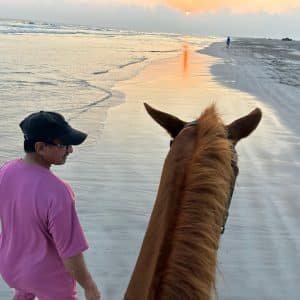
Travel Salalah
Salalah isn’t just a place—it’s a feeling. Nestled in the southern Dhofar region of Oman, Salalah charms visitors with its surprising blend of lush green landscapes, ancient culture, and unspoiled beaches. A stark contrast to the arid deserts of northern Oman, Salalah blossoms during the Khareef (monsoon) season, making it a rare Arabian tropical retreat.
With coconuts swaying in the coastal breeze, frankincense smoke lingering in the air, and camel caravans trudging alongside turquoise shores, this town embodies the unexpected. When you travel Salalah, you walk into a chapter of ancient Arabia kissed by rain.
Best Time to Visit Salalah
The most magical time to travel Salalah is during the Khareef season (June to September). Unlike the rest of the Arabian Peninsula, Salalah transforms into a green paradise during this monsoon. Think foggy hills, drizzling skies, and waterfalls cascading down jagged cliffs.
Not a fan of crowds? October and November offer excellent weather with fewer tourists. For the adventurous soul, winter provides drier weather perfect for hikes and desert trips.
Getting to Salalah
Flying into Salalah International Airport is the most convenient route, especially from Muscat or Dubai. You’ll find regular Oman Air and SalamAir flights. A scenic road trip from Muscat spans 1,000+ kilometers and is an adventure in itself.
Buses from Mwasalat connect major Omani cities, and taxis or rental cars are ideal for local travel once in Salalah.
Visa and Entry Requirements
Most nationalities can get an e-visa via the official Royal Oman Police portal. Make sure your passport is valid for at least six months, and always carry a copy of your visa.
GCC nationals don’t require a visa, while Schengen and US citizens can get short-term tourist permits online easily.
Salalah Weather Guide
Salalah has a subtropical climate. Here’s what to expect:
| Month | Avg. Temp (°C) | Weather |
|---|---|---|
| January | 25 | Cool, dry |
| June–Sept | 23–26 | Rainy, foggy (Khareef) |
| October | 28 | Pleasant, green |
| December | 24 | Mild, perfect for trekking |
Pack light cotton clothes, waterproof jackets for Khareef, and sturdy shoes for those hikes!
Top Attractions in Salalah
Al Mughsail Beach – Famous for its blowholes and white sands
Sultan Qaboos Mosque – Stunning Islamic architecture
Wadi Darbat – Waterfalls and kayaking in monsoon months
Al Baleed Archaeological Park – UNESCO site with ancient ruins
Each spot offers an unforgettable experience that blends nature, history, and mystery.
Natural Wonders Near Salalah
If you’re seeking unspoiled nature, travel Salalah to uncover breathtaking gems:
Ayn Khor Waterfall – Flowing vibrantly during Khareef, this waterfall is hidden in lush hills.
Jebel Samhan – A mountain plateau offering sweeping views and the chance to spot Arabian leopards.
Frankincense Land – A UNESCO Heritage site steeped in trade history and aromatic richness.
These wonders testify to Salalah’s unique terrain, where desert meets rainforest and mountains meet ocean.
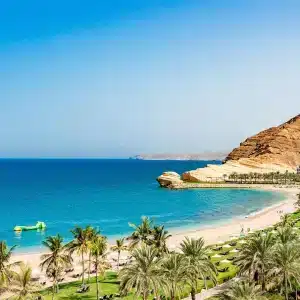
Beaches in Salalah
Dreaming of sun-kissed shores? Salalah boasts some of the cleanest and calmest beaches in the Gulf region:
Al Fazayah Beach – Secluded, pristine, perfect for picnics.
Taqah Beach – Close to the village, great for early morning walks.
Khor Rori Beach – Combines archaeology with natural beauty.
Swimming, dolphin watching, or simply basking under the Arabian sun—Salalah’s coastline offers it all.
Salalah Mountains and Hiking Trails
Adventurers, rejoice. The Dhofar mountains are laced with hiking trails and cliffside panoramas.
Wadi Naheez – A trail mixing caves, springs, and herds of goats.
Jebel Qara Trails – Offers relatively easy climbs with great photo ops.
Tawi Atayr Sinkhole – One of the world’s largest, set amid dramatic terrain.
Always carry water, start early, and wear good hiking boots.
Historical and Cultural Sites
Salalah is a time capsule of Oman’s maritime glory and spiritual depth:
Al Baleed Archaeological Park – Once a key trading port, now an open-air museum.
Museum of the Frankincense Land – Illuminates Salalah’s vital role in the incense trade.
Sumhuram Ruins – Alleged port of the Queen of Sheba.
History whispers from every ruin, and the stories feel alive as you explore.
Khareef Festival Highlights
Every year, Salalah hosts the Khareef Festival—a spectacular celebration of culture, music, and life:
Parades and folklore performances
Live music and food stalls
Art exhibits and sporting events
It’s a grand affair, running from July to September. The entire city transforms into a festive playground, welcoming both locals and international guests.
Best Food to Try in Salalah
Omani cuisine is hearty, spiced, and full of love:
Maqbous – Spiced rice with lamb or chicken
Mashuai – Grilled kingfish with lemon rice
Harees – Wheat and meat slow-cooked to creamy perfection
Karak tea and coconut water – Refreshing and available on every corner
Visit Al Haffa Beach Street or the Salalah Garden Mall food court for authentic bites.
Salalah’s Unique Frankincense Heritage
Frankincense trees only grow in a few places on Earth—and Salalah is the crown jewel. These mystical trees:
Produce a resin used for centuries in rituals and perfumes
Thrive in the rocky Dhofar terrain
Are sold in souks and shops, raw or as oil
You can even walk through the Wadi Dawkah Frankincense Reserve, where the scent is magical and the landscape surreal.
Local Souks and Shopping Experiences
Head to Al Husn Souq for an authentic Omani shopping spree:
Incense burners, khanjars (daggers), and silver jewelry
Fresh dates, spices, and handmade crafts
Affordable textiles and traditional attire
The market is a sensory overload—but in the best way possible.
Accommodation Options in Salalah
From beachfront villas to cozy city inns:
| Type | Popular Options |
|---|---|
| Luxury Hotels | Al Baleed Resort by Anantara, Hilton Salalah |
| Budget Options | Star Emirates Hotel, Salalah Plaza Hotel |
| Unique Stays | Ocean View Chalets, Frankincense Farmstays |
Book early during Khareef to avoid disappointment.
Transport and Getting Around
The best way to explore Salalah? Rent a car. Roads are in good condition, and signs are bilingual (Arabic & English). Alternatively:
Local taxis are easy to flag and reasonably priced
Apps like Otaxi and Marhaba offer rideshare options
Mwasalat buses link some tourist spots
Always carry small change for local transport.
Travel Salalah Itinerary Ideas
3-Day Itinerary:
Day 1: Wadi Darbat, Al Mughsail Beach
Day 2: Jebel Samhan, Sumhuram Ruins
Day 3: Museum & Al Husn Souq
5-Day Plan:
Add beach time, Ayn Razat, and a village visit
Week-Long Stay:
Go deeper into the desert, hike more trails, and attend a Khareef celebration
Wildlife and Nature Encounters
Salalah is brimming with life:
Spot camels walking freely
Observe flamingos at Khor Rori
Go on a dolphin-watching tour near Mirbat
Bring binoculars and patience—the rewards are mesmerizing.
Hidden Gems in Salalah
Hidden Beach near Raysut – Isolated and quiet
Sinkhole of Tawi Atayr – A natural wonder less traveled
Wadi Ayun – Less known but incredibly picturesque
Only locals or seasoned travelers know of these spots—go early and leave no trace.
Eco-Tourism and Sustainable Travel
Opt for experiences that give back:
Choose locally guided tours
Avoid plastic, use refillable bottles
Support eco-resorts using solar energy
Salalah’s environment is fragile—tread lightly and with love.
Safety Tips for Travelers
Oman is one of the safest countries in the world. Still:
Don’t drink tap water; bottled is best
Respect cultural norms—modest clothing is appreciated
Avoid mountainous drives at night or during heavy fog
Have local emergency numbers on hand and travel insurance sorted.
Travel with Kids in Salalah
Salalah is surprisingly kid-friendly:
Visit Mini Zoo, Al Haffa Corniche, and Wadi Darbat
Beaches are safe and calm
Hotels often include play areas or pools
Pack snacks and sunblock—and watch the little ones soak up culture and nature.
Travel Salalah on a Budget
Want an adventure without breaking the bank?
Stay in guesthouses or family-run hotels
Eat where locals eat—like cafeterias and small joints
Use public transport or share taxis
Traveling off-season can also save you a bundle.
Photography Tips in Salalah
Sunrise at Al Fazayah Beach
Foggy landscapes during Khareef
Local markets bursting with colors
Use a polarizer for clearer skies and take wide-angle shots to capture the lush terrain.
Day Trips from Salalah
Great escapes include:
Mirbat – A sleepy fishing village with history
Thumrait – Gateway to the Empty Quarter desert
Taqah Castle – A window into traditional Omani life
Each place adds a different flavor to your Salalah adventure.
FAQs
Is Salalah safe for tourists?
Yes, it’s one of the safest destinations in the Middle East with a low crime rate.
Do I need to rent a car in Salalah?
Highly recommended, as many attractions are spread out and public transport is limited.
When is the Khareef Festival held?
From mid-July to early September, aligning with the monsoon season.
What currency is used in Salalah?
Omani Rial (OMR). Credit cards are accepted in most places, but carry cash for souks.
Can I swim in Salalah beaches?
Absolutely! Most beaches are swimmable and safe for families.
What should I wear in Salalah?
Modest clothing is advised, especially in public and religious places.
Conclusion
To travel Salalah is to experience a side of Arabia many never expect—lush, cool, green, and deeply spiritual. It’s a place where time slows down, nature hugs you, and culture runs deep. Whether you’re chasing waterfalls, learning about frankincense, or sipping coconut water by the beach, Salalah will change you—for the better.

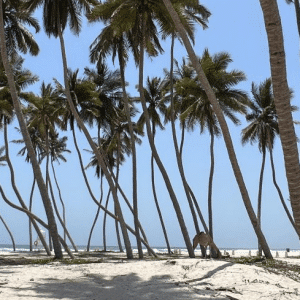
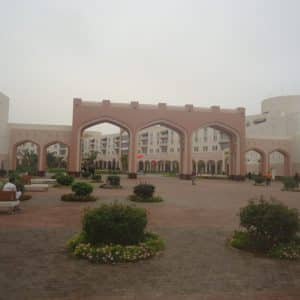
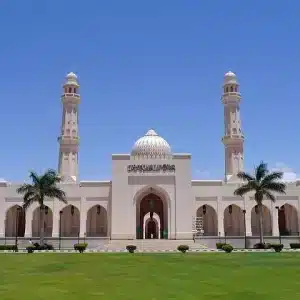
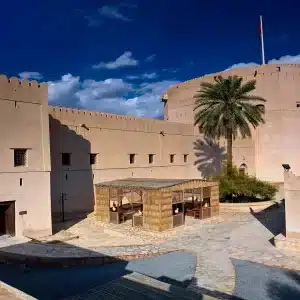



Comment (0)